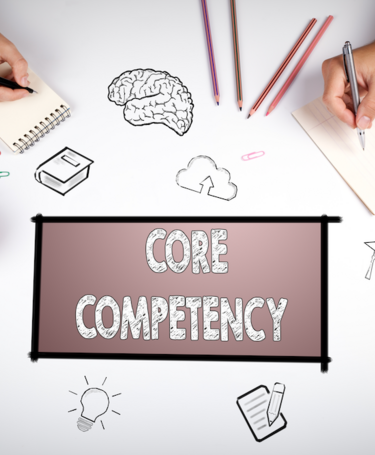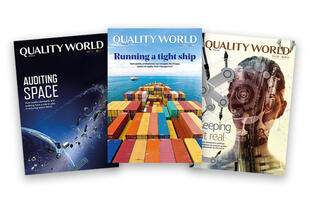
The importance of competency
Progress indicator

Malcolm Royer, CQP MCQI, Senior Quality Manager at Network Rail, explores what is meant by competency and why the term has become popular with businesses over the past two decades.
I have worked in the quality profession for 35 years since I finished my apprenticeship with Petter Diesels in Staines, UK. I have covered nearly all aspects of quality control and quality assurance in the automotive and defence industries. I have worked in and set up calibration laboratories, raw material inspection, assembly line, machine shop and final assembly and test inspection.
For the past thirty years, I have worked in the light and heavy rail industry. Most recently, I have worked on the installation of new signalling systems on the London Underground for the Jubilee and Northern Lines, Crossrail and, now, Network Rail, working on the cost of poor quality.
Over the past 20 years, I have seen the word ‘competency’ become more popular in the workplace, particularly with reference to how a person can demonstrate competence at work.
Competency is defined as ‘the ability to do something successfully and efficiently’. Competency can be at a corporate level and at an individual level. Corporate competency from a quality perspective is usually recognised as gaining ISO 9001:2015 certification.
A lack of corporate competency can cause health and safety problems within the work environment and can also lead to poor quality. This could lead to fatalities or rework which will cost the company money, and possibly their reputation.
The Boeing 737 Max 8 aircraft failed essentially due to insufficient software testing and the company being allowed to self-assure by the Federal Aviation Administration (FAA). No independent checks were carried out – checks that may have identified the issue with the automated stall-prevention system (ASPS). This has now caused severe damage to Boeing’s reputation and loss of sales.
The way an employee’s competency is assessed is also important. Competency can be evaluated by understanding the requirements defined for a role, through competency-based interviews, looking at what happens to an employee under stress, asking why some people are better at the same task than others, and looking at how competency is affected by external influences such as data and instrumentation, illness and work life balance.
Competencies can be taught through practical demonstrations and assessed by visual examination, while others may require years of training, mentoring and exams and other through degrees, postgraduate routes and a track record of achievement.
Health, wellbeing and competence
On 15 January 2009, Chesley Sullenberger and his co-pilot Jeff Skiles flew an Airbus A320-214 out of New York City's LaGuardia airport. They suffered a double engine failure after hitting a flock of Canada Geese. Sullenberger took some time to evaluate the situation and made the decision to make a water landing in the Hudson river – the first successful water landing.
Sullenberger had been flying for 40 years and had nearly 20,000 hours flying experience. He had spent his early years as a US Fighter pilot and was also an air accident investigator. His skill, knowledge and level head knew that they could not make a safe landing at the airport. His reflective thinking time made the difference between life and death for all the 155 passengers and five crew.
In contrast to the Hudson River landing, a District Line train failed to stop at the buffers at Richmond station on 18 September 1987. The driver was found to be under the influence of recreational drugs. Stress, fatigue, depression, long-term medical problems or drugs and alcohol abuse can all affect an employee’s competency.
The incident resulted in the publication of the Transport and Works Act 1992 and the London Underground Alcohol and Drugs Standards, which set out the reasons for drug testing employees. Drugs and alcohol testing were initially used on safety critical staff or staff holding safety critical licences, although many engineers working on site have been randomly tested. A positive result usually results in instant dismissal.
Fatigue, as defined by the UK’s Office of Rail and Road (ORR) in their Managing Rail Staff Fatigue (2012) document is: “a state of perceived weariness that can result from prolonged working, heavy workload, insufficient rest and inadequate sleep”.
Fatigue was concluded to be the primary cause of the Clapham Junction train crash outside of London on 12 December 1988. Staff may also worry about changes to their company, personal finances, domestic life, elderly parents or relationship issues. Many companies now provide mental first aiders and confidential help lines to support their employees.
Ideally, skills and competencies should be assessed regularly, particularly if there has been a change to processes or legislation. The cost of poor quality should also be a measure that all companies actively manage, and then look to implement corrective action based on the findings of this analysis.
Quality World

Get the latest news, interviews and features on quality in our industry leading magazine.

